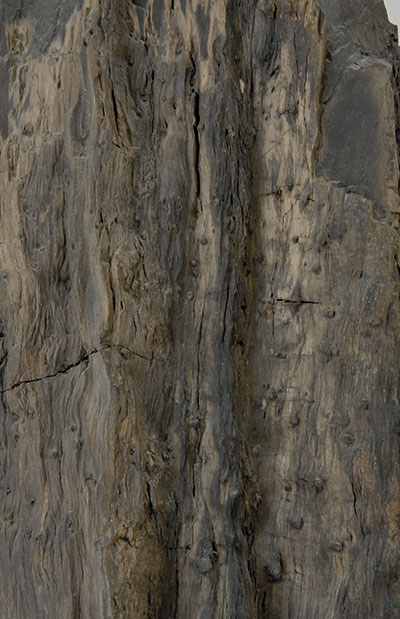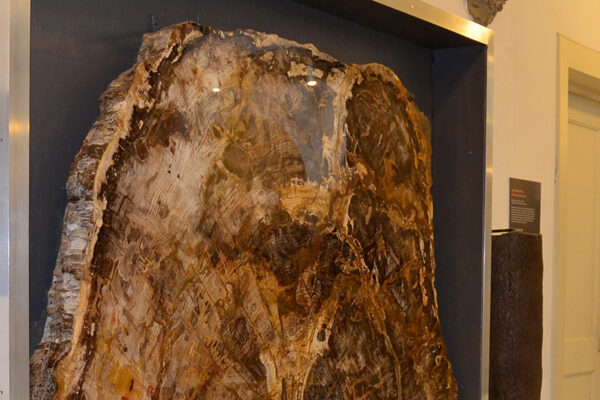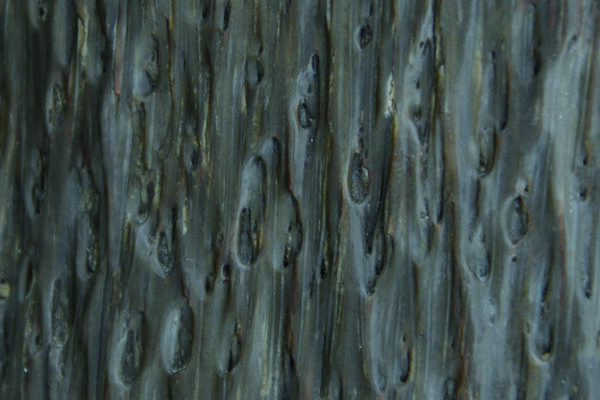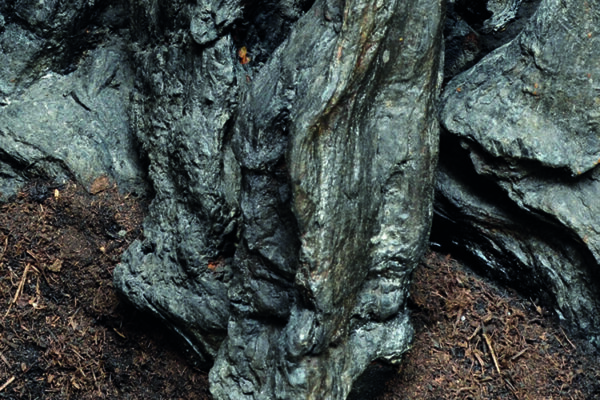Conifer Trunk
Silicified Trunk of a Conifer
Protocupressinoxylon catenatum

Posidonia Shale, Early Jurassic: Toarcian,
approx. 180 Mio. years old
Gesees in Bayreuth, Upper Franconia, Bavaria, Germany
Fossil woods of the genus Protocupressinoxylon belong to conifers, that much can be determined on the basis of wood anatomy. It is also clear that these woods are structurally similar to those of present-day cypresses (Cupressaceae). However, exactly what the trees that produced Protocupressinoxylon wood looked like, and whether they are indeed close relatives of today’s cypresses, is not known. One species, P. purbeckensis from the Upper Jurassic of Dorset, England, is reconstructed as an upright, squat trunk with short branches and shallow roots in the ground. Some paleobotanists place Protocupressinoxylon in the extinct conifer family Cheirolepidiaceae.
SNSB-BSPG 1967 XVI
Original






